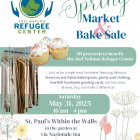Looking for that perfect home in Rome.
When I moved to Rome in January, I found myself living in a small, but decent shared flat near Castel S. Angelo within a week. I'd been warned that house-hunting would be a nightmare in Rome and I should be braced for a host of setbacks yet here I was. The fact is, Id been lucky in finding the flat via a friend already living in the city. Within two months, my housemate returned to live in the UK, I was out of the flat and reality set in as I joined the ranks of other home-seekers in the city.
When you ask people about searching for a home in Rome there are two responses; one is "dont get ripped off" and the other slightly less useful one is "rather you than me". They might add that the most affordable choices for those new to Rome are flat- and house-shares. A problem with such set-ups is that they often offer only a bedroom and communal use of the bathroom and kitchen, which can prove restrictive and reduce the social benefits of sharing, particularly if there is no living room. Some advertisements even say that the kitchen can be used only with special permission, which can be tiresome when you've just got the shopping in.
The quality of these rooms varies considerably but the price often provides the first clue. For example, an ad in a bookshop offering a flat-share in Monteverde with one other person and use of the whole apartment sounded good, but the price was rather suspicious at 250. The leafy, quiet neighbourhood looked promising and there was a nearby tram-link to Trastevere. This optimistic mood was dispelled by a smoke of joss sticks, often an odour-hiding sign, in the hallway. There was a mattress in the corner of the so-called bedroom but little else. The television mentioned in the ad was a broken television in the hallway near the door. Thankfully, the areas excellent transport links made for a quick getaway. Finding a flat-share can prove worthwhile however, as it is an excellent way to make new friends in Rome.
Many people still prefer to find a place of their own. This is proving more and more expensive with flats being advertised for well over 1,000 a month, with bills on top of that. An agency can also help find a suitable place, but fees often amount to about a month's rent with cautionary deposits totalling two to four months' rent. Once again, there is no guarantee of quality; a studio flat in Trastevere looked decent enough until a wardrobe door fell off during viewing. Names of agencies can be found in the pagine gialle (yellow pages) by looking under agenzie immobiliarie.
Another way of finding apartments in Rome is through small "affitasi" (for rent) notices in the streets. However, it is difficult to know from these if agencies are involved or not.
Wherever you look for a place, the main and most obvious points to bear in mind are:
Word of mouth is often the best means of finding somewhere to live. After house-sitting outside Rome in Castel Gandolfo for two months, Im now moving back to Prati, an area near the Vatican, to share with two friends. I hope you find something too. Just beware of those joss sticks.
Many international bookshops also carry a wealth of ads such as Feltrinelli International in Via V.E. Orlando, The Economy Book and Video Center in Via Torino and Bibli in Via dei Fienaroli. Look also on university notice boards and for adverts around university areas.
Places to find housing adverts include Wanted in Rome, published every two weeks, and Porta Portese, published on Tuesday and Friday.
More detailed guidelines for living in Rome are available from www.informer.it.


















